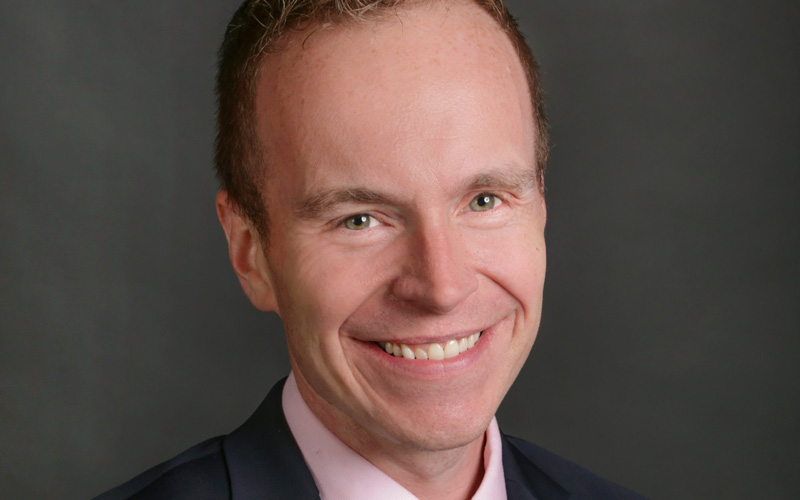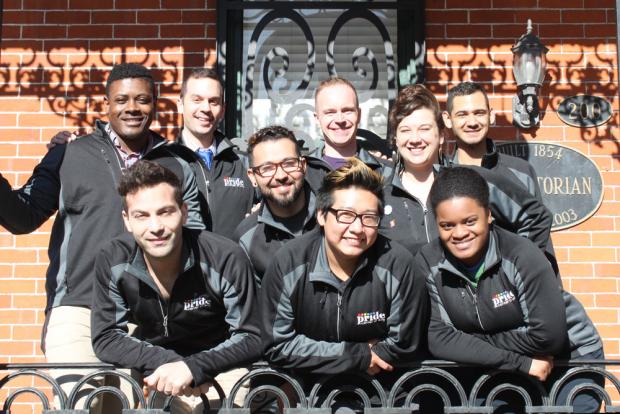It's Always Pride Season at the Pride Center
It’s more than just an agency set up to organize parade floats and paper the city with rainbow flags. But maybe people don’t realize that.
The Pride Center of Western New York (PCWNY) is a hard-working organization that keeps the wheels of the LGBTQ short-bus turning all year round, helping advocate and educate on behalf of an ever-evolving and significant population in the Buffalo metropolitan area. And then, of course, they bring us Pride—with a capital P.
“What the majority of people recognize us for is being the lead agency for Pride fest, and so this is when the most eyes are focused toward us,” says Matthew Crehan-Higgins, PCWNY’s senior director. “On a day-to-day basis, however, we’re administering three or four grant-funding projects for the New York State Board of Health, and that’s what really keeps us consistently busy.”
Crehan-Higgins, 36, is a lifelong Western New Yorker so committed to the area that he experiences homesickness after just a few days away. He’s declined career moves that might otherwise have forced him to uproot, and his extended family has also stayed put. (You’re probably familiar with his uncle, Congressman Brian Higgins, whose election campaign he supported as the official LGBTQ community liaison beginning back in 2004.) Safe to say, Buffalo is in the Higgins blood.
Alongside a creative career as an award-winning playwright involved with Buffalo United Artists—his Confessions, written when he was just 21, was honored at the 2004 National Gay and Lesbian Theatre Festival and his seventh play, Christmas in July, goes up in October—the happily partnered Higgins cut his teeth for the directorial slot at the Pride Center with a 12-year run at Erie County Medical Center, where he focused on immunodeficiency services. Beginning as a summer temp employee doing data entry, he was eventually named a program manager in 2013. En route, he worked as an HIV training assistant, medical social worker, and program coordinator.

“When I became program manager in 2013, a lot of things about my job changed and I started feeling like it was time to move on,” he says. “I wasn’t sure what that meant, though, and I had no idea what I was looking for. There’s something amazing about staying at one place for so long, but when I received the call from Ray Ganoe [chief executive officer on Evergreen’s management team], I was ready.”
Crehan-Higgins was interviewed to spearhead the PCWNY when it opened as a physical entity in 2003, but says he wasn’t right for the job back then. Although his desire to be a community leader had already taken root, the level of experience required felt out of reach. Nearly 12 years on, combining his many roles at ECMC with his work as a columnist (“Life Diaries”) for abOUT magazine from 2003 to 2007, the timing seemed serendipitous.
And the proof is in the pudding: Since his coming on board in the fall of 2014, the profile of the PCWNY has grown considerably, as have the needs of the community it serves. Annual requests for cultural competency training sessions skyrocketed from the standard dozen or so to a whopping 70 last year, including the FBI and Buffalo Police Department (hat tip to PCWNY staffer Damian Mordecai, director of engagement and education). Additionally, the organization is constantly looking at new ways to address the needs of both the transgender population and gay older adults. Recognizing that the LGBTQ population is more a series of interconnected communities rather than a single group seems of prime importance to the Pride Center.
But realizing how far the organization has come is perhaps best reflected in the long road it has traveled over the past 40 years. Evergreen Health Services President Ron Silverio has been around since the Pride Center’s beginnings. Although admittedly hazy on dates, he spoke briefly of the time before AIDS.
“There had been a very strong gay community center in the mid-1970s, and it had an office above a tire sales place at Main and Utica,” SIlverio recalls. “There was a $50,000 budget and a dance hall, because this was still at a time when you couldn’t legally dance in the bars. I ended up being on the board there, and I got a sense of what it was like to have an active, vibrant community center… but as soon as it became legal to dance at the bars, the budget went down to about 50 bucks, after which we struggled to maintain a presence.”
Once AIDS began ravaging the community, however, AIDS Community Services group (ACS, launched in 1983) sought to find ways of engaging men who have sex with men (MSMs) in dialogues about staying healthy. According to Silverio, who remains on the board at PCWNY, ACS felt that gay men in particular needed an organized way of reclaiming the sense of brotherhood that the previous community center had fostered. It took a while to get things moving again—he estimates about a decade after the community center’s demise.
“Since ACS already had a structure in place, we saw ourselves as having a responsibility in that regard,” he explained. “We were involved in a variety of education and prevention efforts that were mostly funded by the state, but we wanted to introduce a forum that had a different focus than AIDS. We wanted to just convene with folks, so we started renting the upstairs area of a restaurant, inviting 30 to 45 people, to get feedback about our efforts and listen to the community. Eventually, people said they’d like to do something similar on a monthly basis.”
From there, a monthly lunch group was also launched, which became titled the Gay and Lesbian Coalition of Western New York and was incorporated as a 501c3. With the lunch group serving as the board, state funding was then applied for and made available through the Aids Institute to rent an official space (at Trinity Place) and hire a director with an administrative assistant. When budget cuts threatened the future of the organization, it was brought under the Evergreen umbrella, which basically gave birth to the current incarnation of PCWNY as we know it.
The above history is somewhat abbreviated, but the important takeaway is that the concept of a Pride Center survived, even in a blue-collar town like Buffalo that’s been oft-pegged by outsiders as unusually homophobic. It goes far to demonstrate that, especially in light of recent growth and expansion of PCWNY’s efforts, the internet is not necessarily bringing us together. There’s still a huge need for brick-and-mortar establishments where people are at work uniting likeminded communities and finding ways to educate us on how best to handle relationships with those that aren’t likeminded. Seen in that light, the Pride Center is certainly progressive, but it also serves to help keep the peace.
Currently, PCWNY is involved in two ongoing state Board of Health grant-funded projects: LGBT Health and Human Services and the Trans Health Initiative. Both are designed to help folks find the healthcare they need in appropriate, affirming environments. A third project just about to launch is called SCOUT, which takes the notion of affirming healthcare a step further, aiming to reach young MSMs where they live, work, study, and play with sexual health prevention messages and tools, screening programs, educational materials, and advocacy opportunities.
“Sexual health campaigns almost always use language with some inherent judgment,” says Crehan-Higgins. “That can inhibit someone’s ability to be honest and potentially prevents them from taking advantage of programs that could really be helpful. With SCOUT, we want to engage with these men and hear about their lives the way they’re living them, not the way some idealized language makes them feel they should be living. It’s a step toward greater honesty and getting rid of shame.”
Additionally, a fourth state grant-funded program will launch in the not-too-distant future that addresses some of the needs of LGBT older adults. This, alongside the annual preparation for Pride Week itself, the annual Trans Wellness Conference, the monthly Out for Business professional networking events, ongoing book clubs for both men and women, the cultural competency training programs, and the maintenance of an online resource guide that pairs LGBTQ community members with approximately 200 affirming services—it all keeps PCWNY busily humming along.
“I think when people come to our open house or look at our service brochure, they’re genuinely surprised by all that we have going on,” Crehan-Higgins says. “There are lots of intersections in our community, different needs…if you’re not going through life and coming up against some of the issues we’re addressing, you wouldn’t necessarily realize the services we have in place. The hope is that people can find us when they need us. Our visibility has increased during my time here, which increases opportunities and brings people to the surface that want to partner on projects. We can’t take them all on, but we can always help get the word out about relevant things.”
Having watched from the start, SIlverio says Higgins is exactly what PCWNY needs.
“Having a vibrant pride center makes a huge difference in the overall health of a community,” he says. “We went for a significant period of time without one and felt the difference—it’s a need. I think Matt is the best visionary we have. He sees it on the ground, whereas for me, I enjoy creating and developing organizations, that sort of stuff. I’m not much of a programming guy. The vision for me is that it survives and grows, but we need Matt and his team to help realize what that really looks like.”
PRIDE CENTER OF WESTERN NEW YORK
200 S. Elmwood Ave, Buffalo / pridecenterwny.org
Facebook / Twitter

